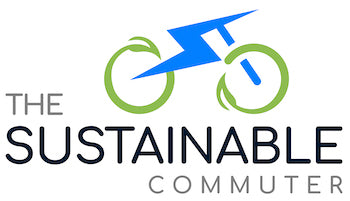
Promoting Sustainable Commuting: Creating a More Livable, Healthy, and Equitable Future
Share
Transportation is a crucial aspect of modern life, enabling us to travel to work, school, and other activities. However, transportation is also one of the largest sources of greenhouse gas emissions, contributing to climate change and air pollution. In recent years, there has been a growing recognition of the importance of promoting sustainable commuting practices and reducing the carbon footprint of transportation. In this blog post, we will explore the benefits of sustainable commuting, the challenges to promoting it, and examples of sustainable commuting solutions. We will also provide tips on promoting sustainable commuting in your life and community.
The Benefits of Sustainable Commuting
Sustainable commuting, also known as green commuting, refers to the use of transportation modes that produce fewer emissions than traditional modes of transportation, such as single-occupancy vehicles. We can create a more livable, healthy, and equitable future by adopting sustainable commuting practices. Here are some of the benefits of sustainable commuting:
Reducing greenhouse gas emissions and mitigating the impacts of climate change
Transportation is one of the largest sources of greenhouse gas emissions, which contribute to climate change. By promoting sustainable transportation solutions, such as public transportation, biking, and walking, we can reduce our carbon footprint and mitigate the impacts of climate change, such as extreme weather events, rising sea levels, and more frequent natural disasters.
Improving air quality and public health outcomes
Air pollution from transportation is a major contributor to respiratory illnesses, heart disease, and other health problems. By promoting sustainable transportation solutions, we can improve public health outcomes and create more livable, healthy cities. For example, walking or cycling to work can improve physical fitness and mental health, while public transportation can provide affordable and reliable access to jobs, education, and other opportunities.
Conserving energy and resources
Sustainable transportation solutions, such as electric vehicles and public transportation, use less energy and resources than traditional transportation modes, such as gasoline-powered vehicles. By promoting these solutions, we can conserve energy and resources and create a more sustainable future.
Boosting the economy and creating jobs
Sustainable transportation solutions, such as public transportation and bike-sharing programs, can create jobs and boost local economies. Additionally, sustainable transportation solutions can save individuals money on transportation costs, such as gas, parking, and maintenance.
Improving the quality of life for individuals and communities
Sustainable transportation solutions can improve the quality of life for individuals and communities. For example, walking or cycling to work can improve physical fitness and mental health, while public transportation can provide affordable and reliable access to jobs, education, and other opportunities.
Challenges to Promoting Sustainable Commuting
While promoting sustainable commuting is important, there are several challenges to achieving it. Here are some of the challenges:
Lack of infrastructure for sustainable modes of transportation
One of the major challenges is the lack of infrastructure for sustainable modes of transportation, such as bike lanes, pedestrian walkways, and public transportation systems. Without proper infrastructure, it can be difficult for individuals to adopt sustainable commuting practices.
Accessibility issues in rural or low-income areas
Another challenge is the lack of accessibility to sustainable transportation solutions, particularly in rural or low-income areas. Public transportation systems may not be available or accessible in some areas, making it difficult for individuals to use sustainable transportation modes.
Behavioral change and shifting away from single-occupancy vehicles
Changing behavior is often challenging, particularly when it comes to transportation. Many people are used to driving alone, and persuading them to adopt sustainable commuting practices can be difficult.
Cost of sustainable transportation solutions
The cost of sustainable transportation solutions can also be a challenge for some individuals. Electric or hybrid vehicles, for example, can be more expensive than traditional gasoline-powered vehicles, making them less accessible to some people.
Policy and regulatory challenges
Policies and regulations can also be a challenge to promoting sustainable commuting. In some areas, regulations may favor automobiles over sustainable modes of transportation, or there may be a lack of political will to invest in sustainable transportation solutions.
Sustainable Commuting Solutions
Despite the challenges, there are many examples of sustainable commuting solutions that are being implemented around the world. Here are some examples:
- Public transportation systems: Public transportation systems, such as buses, trains, and subways, are a sustainable commuting solution that can provide affordable and reliable transportation options for individuals and communities. Many cities around the world have invested in public transportation systems to promote sustainable commuting.
- Bike lanes and pedestrian walkways: Bike lanes and pedestrian walkways provide safe and accessible transportation options for cyclists and pedestrians. Many cities around the world have implemented bike lanes and pedestrian walkways to promote sustainable commuting.
- Carpooling and ride-sharing services: Carpooling and ride-sharing services, such as Uber and Lyft, provide a more sustainable alternative to driving alone. By sharing rides with others, individuals can reduce the number of cars on the road and promote sustainable commuting.
- Electric and hybrid vehicles: Electric and hybrid vehicles produce fewer emissions than traditional gasoline-powered vehicles, making them a more sustainable commuting option. Many automobile manufacturers have introduced electric and hybrid vehicles to their lineups in recent years.
- Car-sharing and bike-sharing programs: Car-sharing and bike-sharing programs provide access to vehicles on a short-term basis. By promoting car-sharing and reducing the number of cars on the road, these programs are working to promote sustainable commuting.
How to Promote Sustainable Commuting
Promoting sustainable commuting requires individual and collective action. Here are some tips on how to promote sustainable commuting in your own life and community:
Educate yourself on sustainable transportation solutions and their benefits
Learn more about sustainable transportation solutions and their benefits. Many resources are available online, including government websites, non-profit organizations, and academic research.
Choose sustainable modes of transportation
Choose sustainable modes of transportation, such as walking, cycling, public transportation, or carpooling. Use an electric or hybrid vehicle if you must drive. Plan your trips ahead of time to avoid unnecessary driving and optimize your route.
Advocate for change
Contact local government officials to advocate for sustainable transportation solutions. Attend public meetings, sign petitions, and write letters to elected officials. Encourage your workplace to promote sustainable commuting options.
Support sustainable transportation initiatives
Support organizations and initiatives that promote sustainable transportation solutions, such as bike-sharing programs, public transportation systems, and carpooling services.
Set an example
Lead by example and encourage others to adopt sustainable commuting practices. Share your experiences and the benefits of sustainable transportation with friends, family, and colleagues.
Final Thoughts
Promoting sustainable commuting and reducing transportation's carbon footprint requires overcoming various challenges. However, the benefits of sustainable commuting are clear, including mitigating the impacts of climate change, improving public health outcomes, conserving energy and resources, boosting the economy, and improving the quality of life for individuals and communities.
By addressing the challenges through infrastructure improvements, accessibility improvements, behavioral change campaigns, cost-reducing initiatives, and policy changes, we can create a more sustainable future for ourselves and future generations. Supporting sustainable transportation initiatives is essential to creating a more livable, healthy, and equitable future.
